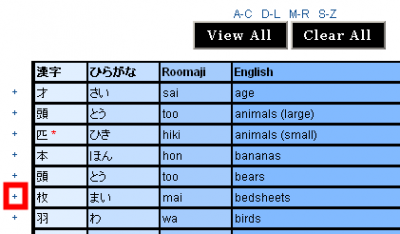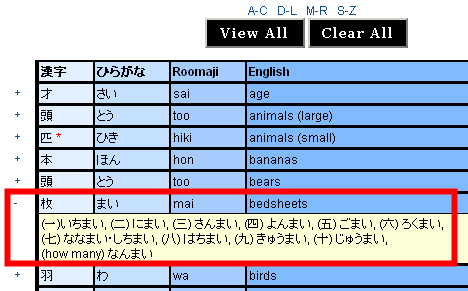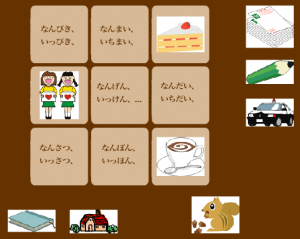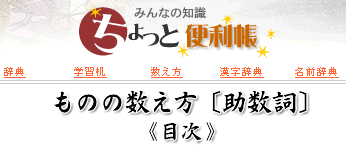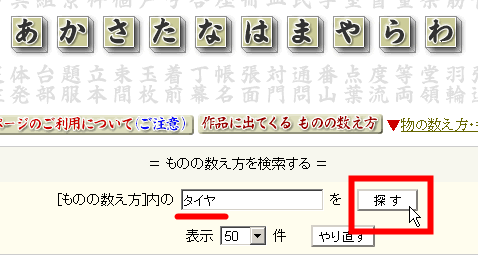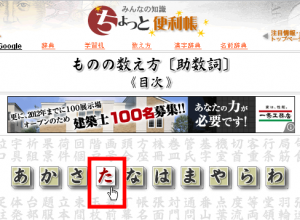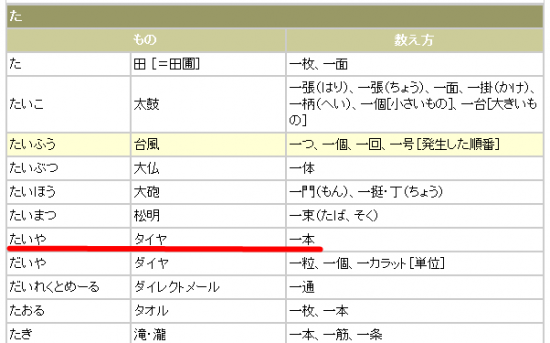Pens = '本'(books), birds = '羽'(wings), stockings = '足'(feet).
Do you know what we're talking about here?
Is it how to count different things?
That's right!
We count long, thin objects - like pens - using 本 (hon).
For birds and rabbits we use 羽 (wa), and
we count stockings and shoes with 足 (soku).
Counting words such as 本, 羽 and 足 are called "助数詞" (josuushi) in Japanese.
There are various counter suffixes in the Japanese language.
There are probably lots of students of Japanese who think "it's such a task to remember them all!".
On the other hand, there are probably some students who think " I want to know more!".
Here we'd like to introduce some useful websites both for those who love counters AND those who find them difficult.
JOSHU (Introduction article)
First, this is a website for people who want to memorise the basic counters,
and who want to practice them.
The site display is in English.
At top screen there is a tag marked 'Counters'.
Click here and you'll find lists of counter suffixes, plus games.
There are 2 lists.
One of these is split into categories such as ' Animals' or 'Things'.
The other list has the English words for objects arranged in alphabetical order.
Click on the '+' sign to see how the counter is read with each number, and for example sentences.
There are also 2 types of game.
For both, you have to match the photo or picture to the correct counter.
ものの数え方〔助数詞〕 (Counting things: Counter suffixes)
Next, here is a website where you can look up the counter for something from the name of the object.
This is part of the contents of みんなの知識 ちょっと便利帳 (Common knowledge - a convenient guide).
The site display is all in Japanese.
There are 2 ways to look things up.
One of these is to enter the name of the thing you want to count into the search box.
For example, let's look up how to count tyres/tires - "タイヤ" in Japanese.
Do you know the correct counter?
Um... isn't it Ikko(1こ), Niko(2こ)...?
Enter the word "タイヤ" into the box in the middle, then click on '探す' (Search).
If you enter the word in hiragana it works too.
The counter used is "一本 (ippon)".
You can also look words up from a hiragana list.
For example, if you wanted to look up "タイヤ"(taiya), you would click on the 'た'(ta) button.
"タイヤ"(taiya) can be found 7th from the top.
There are lots of different ways to count things, aren't there!
Actually, on the 2nd website we introduced here you'll find plenty of counters that even Japanese people don't know.
However, it's interesting to consider why each way of counting was chosen in the first place.
For example, for a round object like a tyre, why do we use a counter like '本', that's supposed to be for long, thin objects?
Try pondering it over!
If I start thinking about it, I probably won't get any sleep at night...



